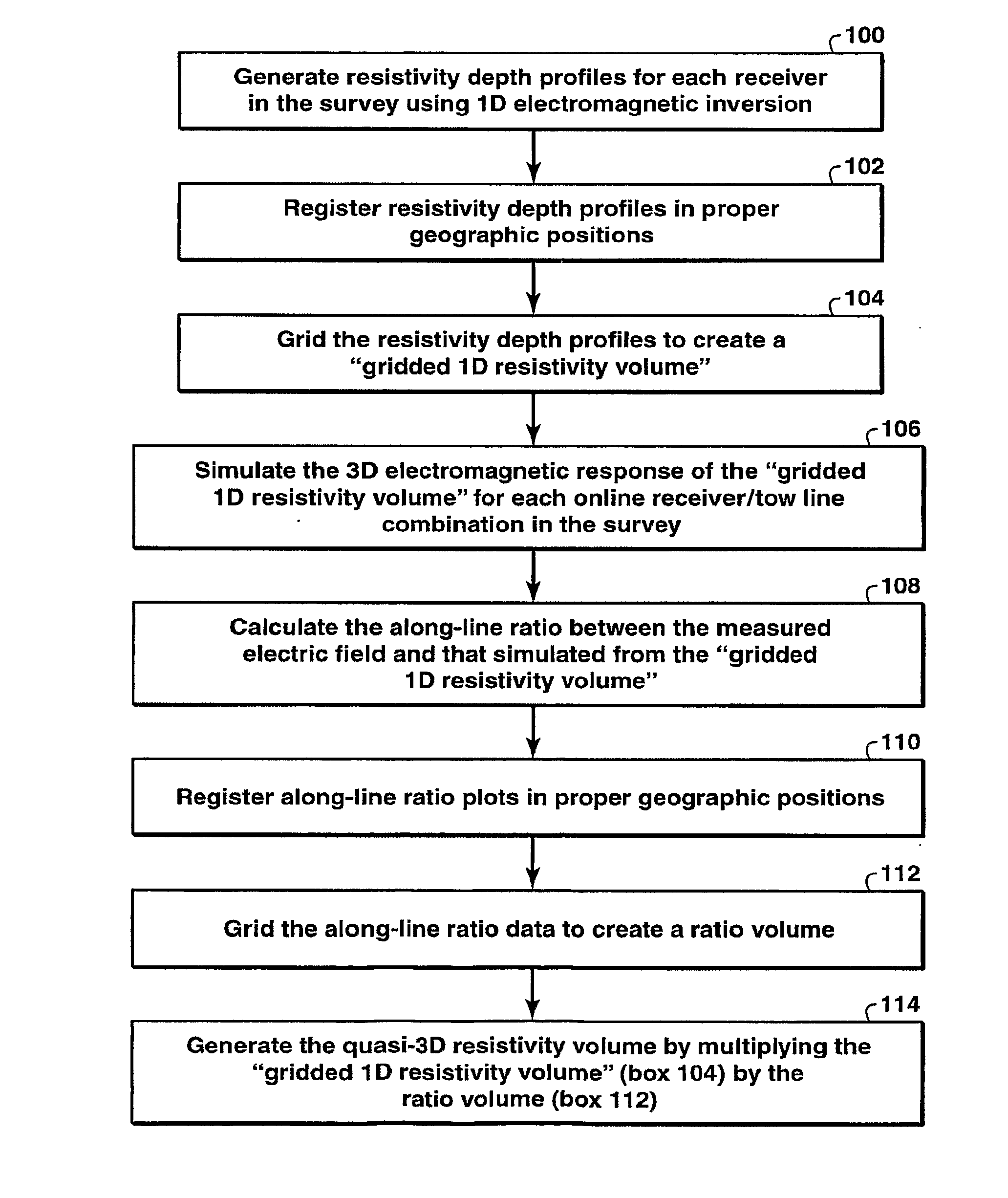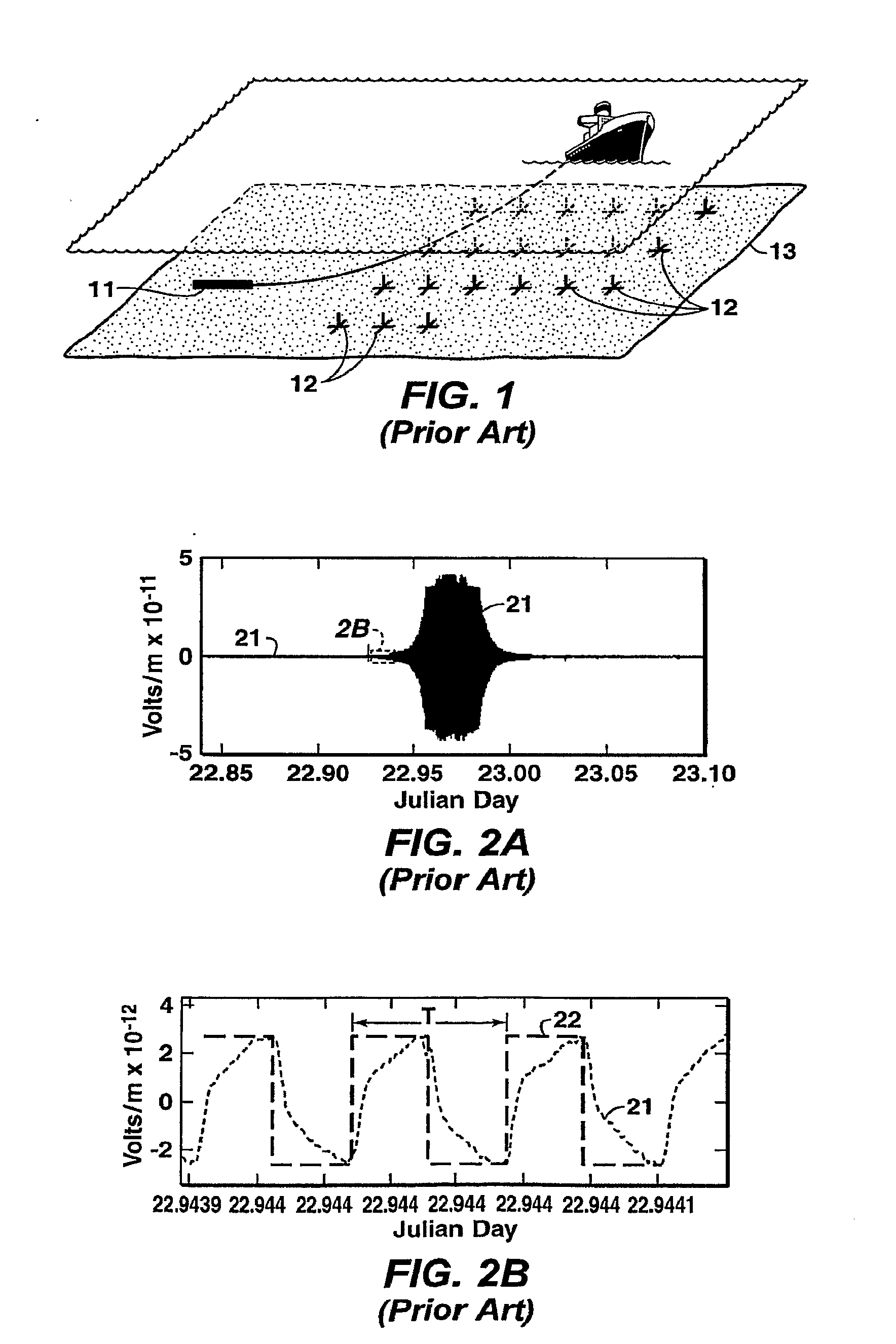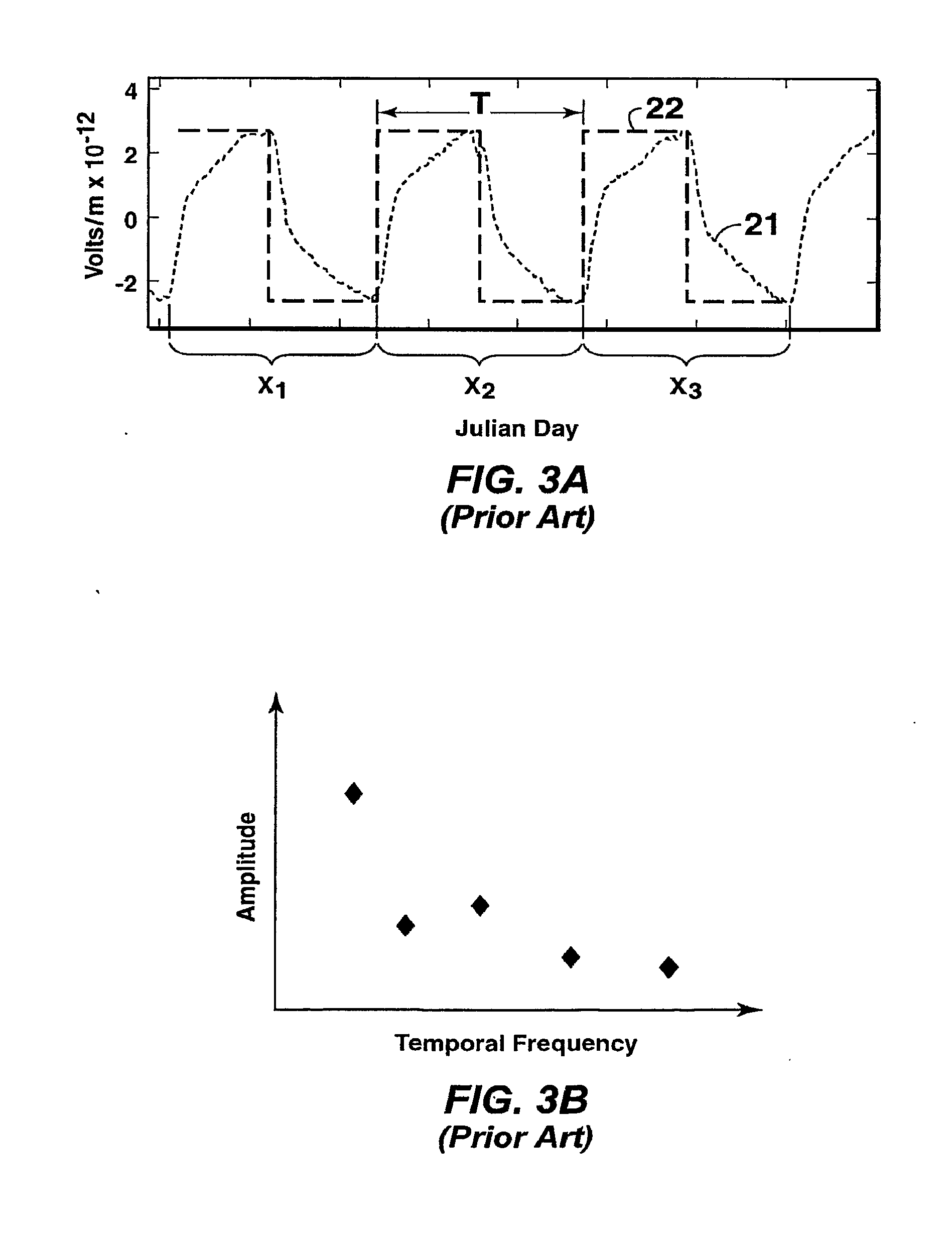Method For Obtaining Resistivity From Controlled Source Electromagnetic Data
- Summary
- Abstract
- Description
- Claims
- Application Information
AI Technical Summary
Benefits of technology
Problems solved by technology
Method used
Image
Examples
example
[0079]A 3D earth model, containing 15 resistive bodies meant to represent hydrocarbon reservoirs, was built and simulated using 3D forward electromagnetic simulation. FIGS. 8A and 8B are map-view depictions of the resistive bodies included in the 3D earth model. Resistive thicknesses of the bodies are depicted in grey-scale in FIG. 8A, with resistive thicknesses increasing from 1000 ohm-m2 (white) to 3500 ohm-m2 (black). The depths below the seafloor are depicted in grey-scale in FIG. 8B, with depths increasing from 900 m (white) to 1400 m (black). The model was simulated using 3D electromagnetic simulations for a grid-style survey consisting of 16 towlines and 39 receivers, based on an actual survey.
[0080]First, resistivity depth profiles for each receiver in the model survey illustrated in FIGS. 8A-B were generated from the simulated survey EM data, consistent with step 100 of FIG. 7. FIGS. 9B and 9C show MCSEM 1D inversion products from two receivers, at three different frequenci...
PUM
 Login to View More
Login to View More Abstract
Description
Claims
Application Information
 Login to View More
Login to View More - R&D
- Intellectual Property
- Life Sciences
- Materials
- Tech Scout
- Unparalleled Data Quality
- Higher Quality Content
- 60% Fewer Hallucinations
Browse by: Latest US Patents, China's latest patents, Technical Efficacy Thesaurus, Application Domain, Technology Topic, Popular Technical Reports.
© 2025 PatSnap. All rights reserved.Legal|Privacy policy|Modern Slavery Act Transparency Statement|Sitemap|About US| Contact US: help@patsnap.com



